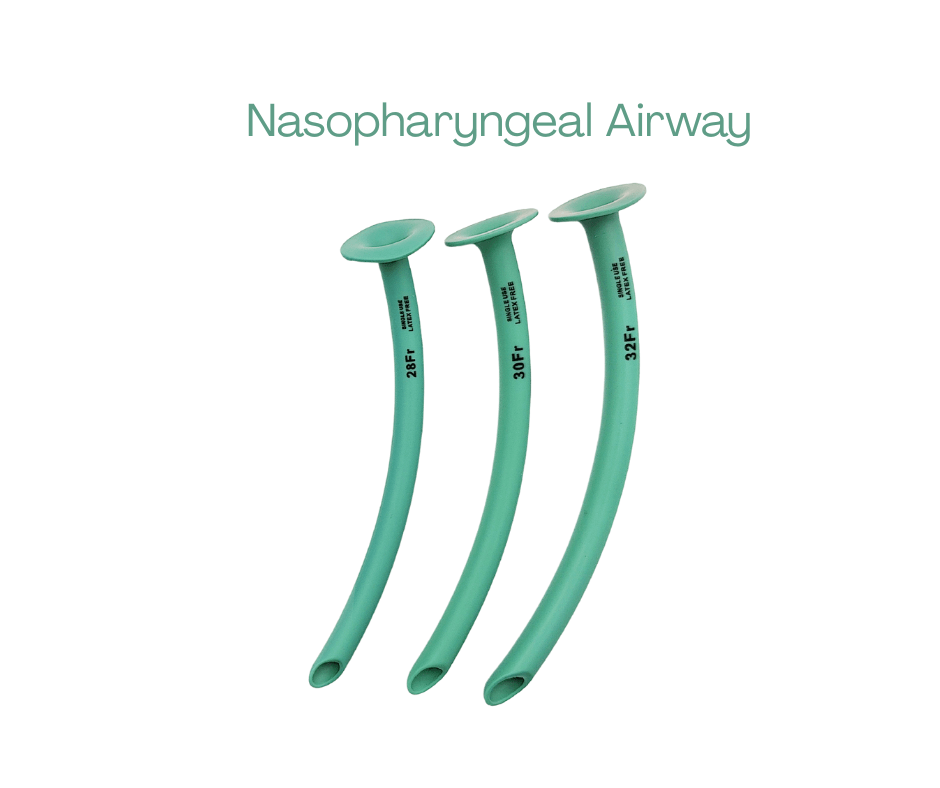TEl: +86-13148388090
Fax:+86-571-88616515
How to Place a Nasal Trumpet Safely
Author: admin / 2025-08-22In the U.S. and in most emergency settings, you'll often hear people say, “Grab a nasal trumpet.” That's the everyday, boots-on-the-ground term used by nurses, combat medics, and anesthesia providers when seconds count. The formal name—nasopharyngeal airway (NPA)—shows up in textbooks, packaging, and hospital paperwork. Even military training manuals write “NPA,” but instructors usually add: “That's your nasal trumpet.”
Knowing the right term is one thing, but knowing why and when to use it is what really matters. Simply put, if the airway is closing and you need to buy time, the nasal trumpet keeps the passage open so air can move. Today, BEVER Medical shares practical tips for safe placement.

Key Takeaways for Nasal Trumpet Placement
- Go straight back, not up. Follow the natural line of the nasal passage, parallel to the floor.
- Size matters. Measure from the nose tip to the earlobe/angle of jaw to get the right length.
- Always lube it. Skipping lubrication causes bleeding and pain.
- Don't force it. If resistance is met, try the other nostril or a smaller size.
- Use when the oral airway fails. Works well in trauma, semi-conscious patients, or when the jaw is tight.
Purpose and Indications
The NPA is designed to bypass obstructions at the nose, nasopharynx, or base of the tongue. It prevents the tongue from collapsing against the back wall of the throat and shutting off airflow. That means oxygen still gets in even if the mouth is clamped shut, the jaw is tight, or facial trauma makes oral access tough.
Situations where the nasal trumpet shines include:
- Trauma patients with decreased consciousness but an intact gag reflex.
- Obstructive sleep apnea or upper airway collapse.
- Post-surgery or anesthesia recovery, when the tongue tends to fall back.
- Tactical or field medicine, where a quick airway fix is needed without advanced gear.
It's usable across the board—from infants to adults—if sized correctly.
Why the Nasal Trumpet Matters
We're sure real cases will convince you just how important NPAs are.
On the Battlefield
A soldier with a blast injury is semi-conscious, jaw locked, and bleeding. An oral airway isn't an option. The medic pulls out a nasopharyngeal airway, slides it straight back into the nostril, and within seconds, the airway is open and the casualty is breathing.
In the Ambulance
A car crash victim is groaning but won't tolerate an oral airway. His tongue keeps blocking his throat. The EMT quickly measures a nasopharyngeal airway, lubricates it, and slides it in. Breath sounds return, chest rise is visible, and oxygen delivery stabilizes.
Wilderness Rescue
A hiker collapses from heatstroke, barely responsive. No advanced airway gear is around. A rescuer with a basic kit uses an NPA to keep the airway open during evacuation. The simple tube keeps him alive until higher care is reached.
Nasal Trumpet: Step-by-Step Insertion Safely
The right size and safe nasopharyngeal airway are important. They are often made of PVC or silicone. Pro tip: Measure from the tip of the nose to the earlobe or to the angle of the jaw. That length usually sets the tip just in front of the glottis, the sweet spot where air can pass freely.
-
Select and Lubricate
Take a PVC nasopharyngeal airway as an example:
- Pick the right size NPA.
- Coat the tube generously with sterile or water-based lubricant. Skipping lube increases the risk of bleeding and makes insertion painful.
-
Know the Angle
- The most common mistake is trying to push it upward toward the forehead. Don’t do that.
- The nasal trumpet goes straight back, parallel to the floor of the nose. Think about the path a nasogastric tube takes—not up into the skull, but back toward the throat.
-
Insertion
- Slide the lubricated tube gently into one nostril.
- Advance it straight back. If you meet strong resistance, don’t force it—pull out, switch nostrils, or try a smaller size.
- Keep going until the flange rests against the nostril. At this point, the distal tip should sit just above the glottis.
-
Keep an Eye on your patient
- Look for chest rise.
- Listen for breath sounds or feel airflow.
- If available, check capnography.
- A comfortable patient without gagging or coughing usually means good placement.
Common Mistakes to Avoid
- Wrong angle: Don't aim upward—go straight back.
- Forcing it: Never push past resistance. You'll cause trauma or bleeding.
- Wrong size: Too short won't stent the airway; too long can irritate or obstruct.
- Skipping lubrication: Dry insertion = pain + nasal injury.
Special Considerations
Not every patient is a candidate for a nasopharyngeal airway:
- Avoid in suspected basilar skull fractures or severe nasal trauma.
- Watch for nasal deformities, polyps, or surgical splints.
- In some advanced field situations, medics may place NPAs in both nostrils (“double barrel”) to maximize airflow, but that's more specialized.
Final Thoughts
Mastering this skill can be the difference. After inserting a nasopharyngeal airway correctly, it keeps the upper airway open and lets air flow when the tongue or tissues block breathing. The key is to size it right, lube it well, and slide it straight back—not up.
If you're learning or brushing up, watching a demo video is a game-changer. Seeing the angle and motion in real time makes the steps second nature.
Ready to practice or stock your kit? Browse Nasopharyngeal Airway options today, including without lubricant, with lubricant, or adjustable—all are fast and reliable in the field or clinic.


